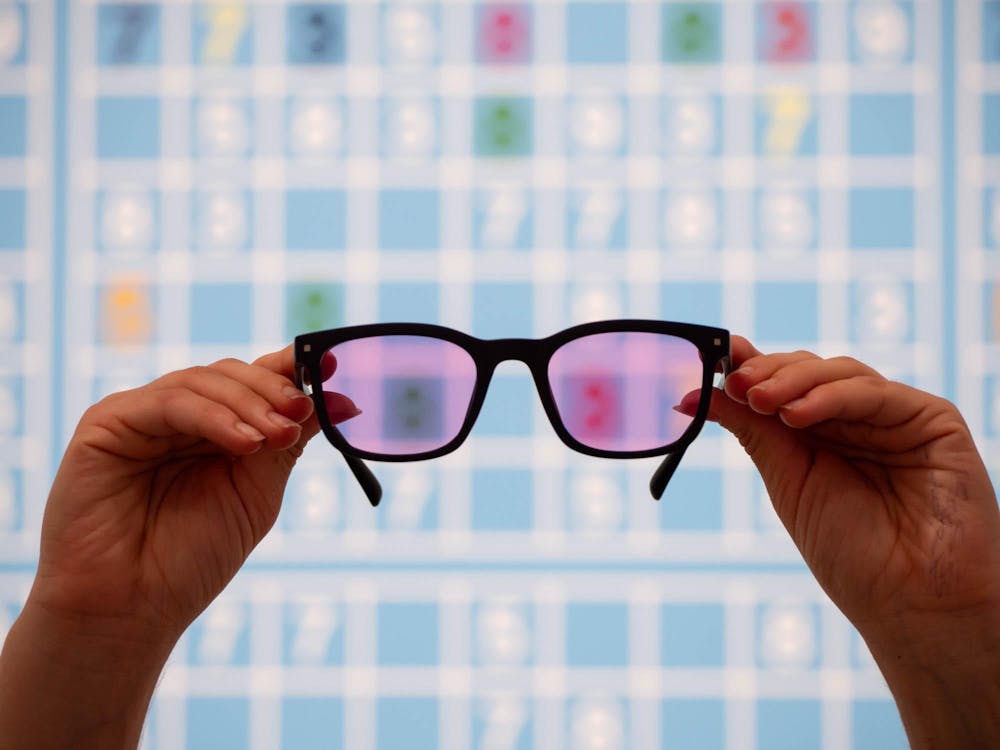The Ackland Art Museum recently acquired an exciting new addition to their facilities: EnChroma glasses. These lenses allow those with red-green colorblindness to see a greater range of color, brightening and saturating otherwise washed-out hues to create a more vibrant and far more accessible experience for the visually impaired. As a public-facing employee of the museum, I witnessed firsthand the waves of excited visitors coming to try the perspective-changing lenses.
As people arrived to use them, free with reservation, the power of this tool could not be undercut; visitors were excited, nervous and amazed at how the glasses worked. The enthusiasm was palpable. It evidenced just how groundbreaking the EnChroma glasses are for colorblind museum visitors — a demographic sure to increase greatly from this initiative.
The inclusion of these glasses showcases a clear interest in catering to all visitors and creating accessible, diverse spaces. Yet, this singular change emphasizes the many different ways the museum remains inaccessible for people with disabilities. These barriers span from architecture to exhibition design to the tools they provide for further learning. Witnessing the introduction of EnChroma glasses to the Ackland has made the inaccessibility of the museum, and more glaringly UNC, more apparent.
Though the museum offers wheelchairs, an elevator and stools for individuals to sit on, there are many blind spots in the institution’s accessibility. For example, the Ackland does not have automatic doors or easily accessible handicap parking. Aside from large print guides (and now the EnChroma glasses), there are no other aids for the visually impaired.
This lack of access for entire populations makes the museum experience far more alienating and uncomfortable for those with disabilities. As an institution dedicated to education and cultural formation, the exclusion of people with disabilities, purposeful or not, is particularly upsetting.
This troubling effect is not an exceptional case of structural inattention on our University’s campus but an extension of a greater trend of on-campus inaccessibility. This 2024-25 fiscal cycle, the University dedicated $5 million to accessibility initiatives across campus, focusing on improving elevators and accessible entrances. However, only 149 buildings have elevators out of 245 University buildings and this accessibility allocation accounts for less than 1 percent of the budget. Like the Ackland, many academic buildings have no automatic doors. Despite having this feature in many residence halls, Carolina Housing requires students to request permission before it can be used.
Inaccessible infrastructure affects academic, administrative and housing buildings, leaving students, faculty and others without the ability to move efficiently through campus. These architectural barriers, like only having stairs inside to only having stairs at the entryways, create hostile spaces for students with disabilities, quite literally barring them from certain places. This applies to all parts of the University, from the uneven, broken brick pathways to the lack of handicap desks for wheelchair users in classrooms.
Taking into account just the accessibility needs of individuals using mobility aids — and not the breadth of other disabilities that affect vision, hearing, learning and more — UNC is deeply inaccessible. Like the museum, the University is an institution dedicated to the expansion of public good and education, with a far greater responsibility to uphold these ideals. As the Ackland takes steps to remedy its inaccessibility, UNC pledges only a small amount of attention and resources to the same aim. The fight for accessibility on campus is an ongoing struggle, brought into sharp relief by the introduction of EnChroma glasses.




